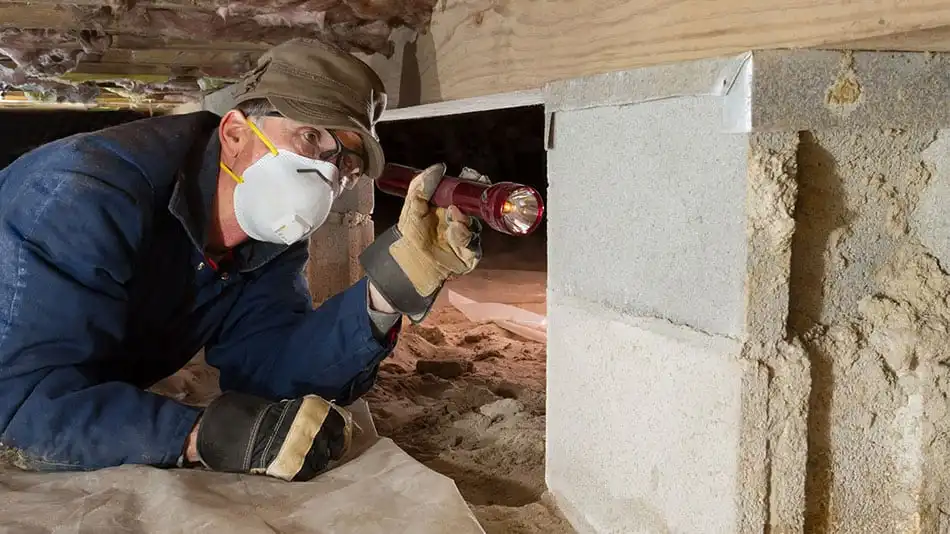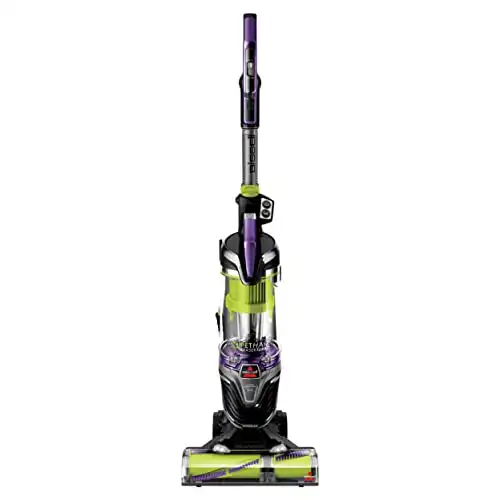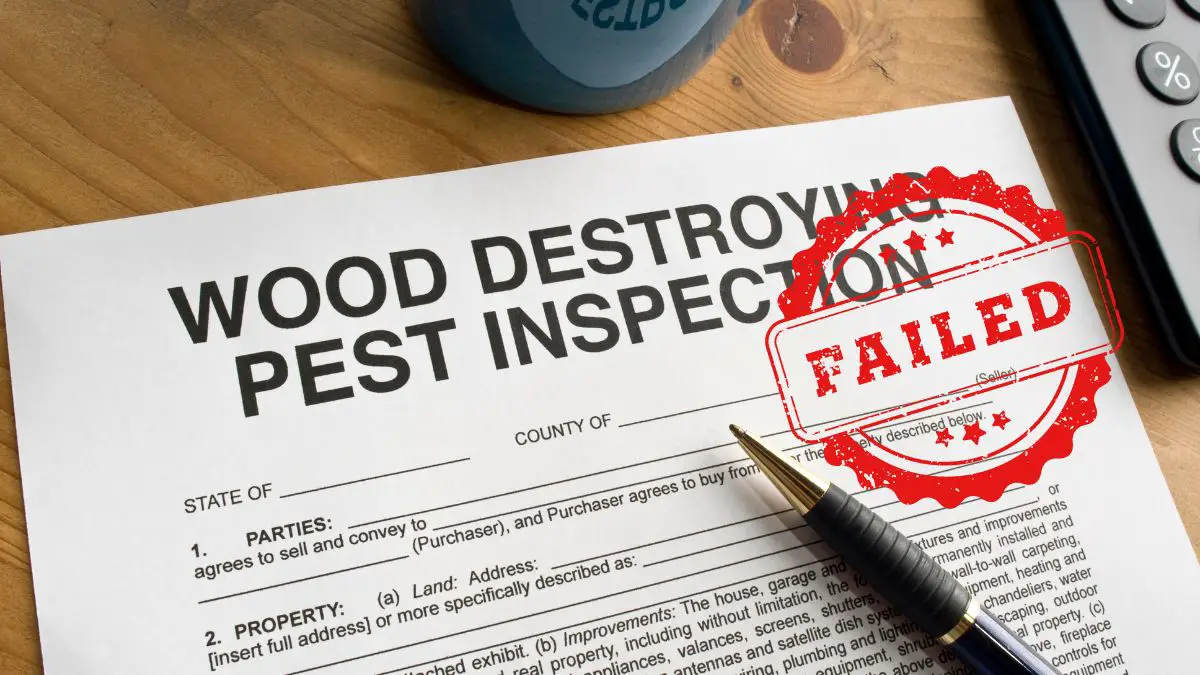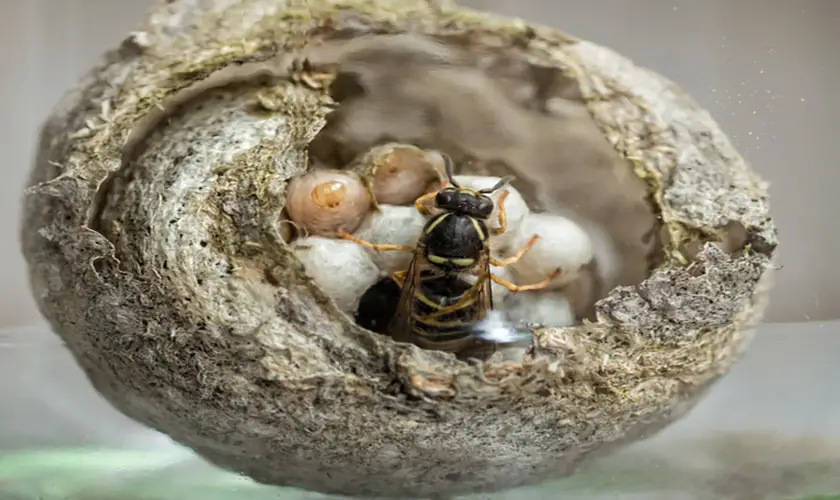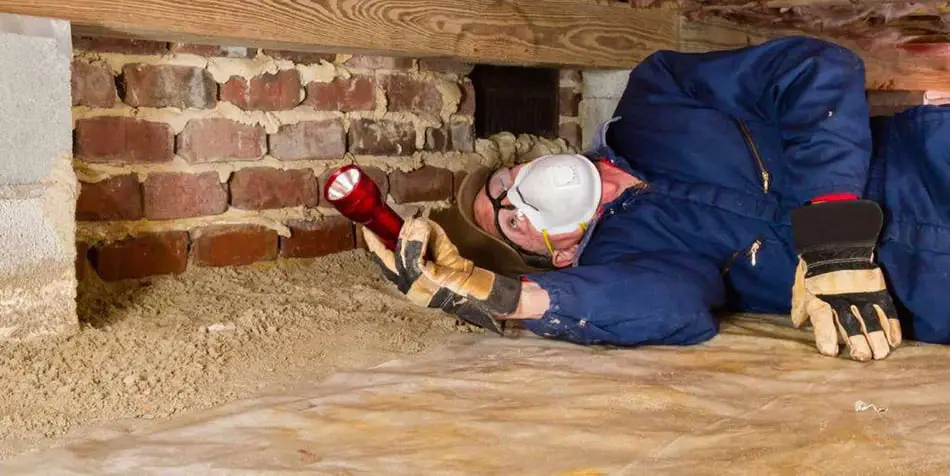
Fleas are a common household nuisance, particularly in households with pets. Homeowners attempt countless methods to rid their properties of this vermin, from bug bombs to pet baths.
However, some of these methods might not be 100% effective, as fleas continue returning to your home. So how do you get rid of fleas in your house fast?
There are many ways to get rid of fleas in your home. Here is a list of methods for keeping them out:
- Vacuum your house
- Use chemical treatments
- Wash all of your bedding
- Get a steam cleaner
- Natural remedies
- Care for your lawn properly
- Prep the lawn for a flea treatment
- Use lawn pesticides
- Care for your animals
- Be consistent
- Pest control
Get FREE quotes from licensed pest control technicians in your area today. Whether you need spraying for ants, roaches, spiders, ticks, mosquitos, or bed bugs, We Can Help! All technicians are screened, licensed, and insured.
In this article, we will dive deeper into fully getting rid of fleas in your home. Making sure you do everything possible will help you sleep better at night and allows your animals not to be so irritable. It is a winning situation for your entire household when you get rid of these pests, and we here at Pest Control Insider are here to help!
Where Do Fleas Live In Your Home?
To effectively eliminate fleas, you will want to understand where they live within your home. This knowledge will allow you to go to those areas in your home and kill them off successfully.
Firstly, one common question is whether fleas can live on human flesh. The answer is quite simple, no, they do not live on you. However, fleas can still bite us.
The most common flea in the USA is called a “cat flea,” which can live on cats and dogs. Although these creatures are called cat fleas, they can live off of other mammals.
Fleas will typically be under your animal’s underbelly, so you will quickly transfer them into your carpet once your fur baby lays down. Their eggs will be an oval, off-white color.
Aside from their hosts, other common areas in your household include furniture, bedding, and the cracks on your floors. They can be in your yard, so treat the exterior of your home with care as well.
These pests live and breed in moist and warm places, so infestations will usually occur in the summer months.
However, if you live in an area where it is hot year-round, you can expect to see them more often than in a place with seasons.
Do The Flea Test
The least-toxic methods of flea control start with simple monitoring techniques. A straightforward way of detection is flea sock traps. Wear white wool socks over the ends of your pant legs and walk around your house. If there are fleas, they will get stuck in the sock’s material when they jump on you.
Why Is It Important To Get Rid Of Fleas?
Fleas are excellent “hitchhikers.” They have a wide jump range and can ride in people’s clothes or pet hair. A flea’s legs are enlarged for jumping. They can jump 200 times their height.
Not to mention fleas can spread diseases and parasites. In certain situations, they can even cause flea-borne typhus and the bubonic plague, but that is only in dangerous situations. If a flea bite is undetected, your animal can develop tapeworm or heartworm.
Please ensure you target flea breeding and nesting areas to eliminate them quickly. It is essential to get infestations under control rapidly. Fleas have been known to overrun yards and houses soon, as this one Cambridge University study noted.
How Do I Get Rid Of Fleas In My House Fast?
Fleas are a common occurrence in households that have animals in them. However, they can still come to homes without animals. This could be due to a few reasons.
The main reason they will be in your home without pets is that other wild animals such as squirrels, stray dogs, and raccoons on your property may contain them, hence the infestation.
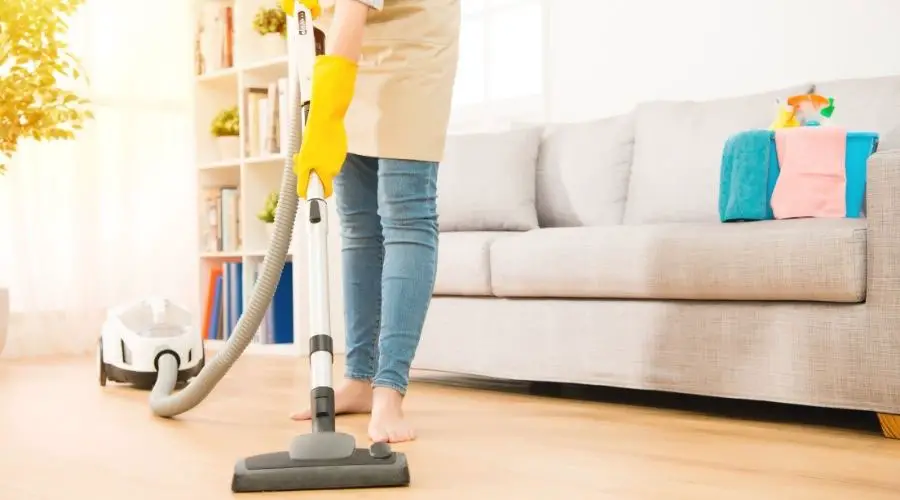
1. Vacuum Up Your Home Real Good
The University of Tennessee lists a series of nonchemical methods you can use to control fleas. Vacuuming is at the top of the nonchemical list. UT advises frequent pet bed vacuuming to isolate and contain flea populations. It is estimated that regular pet bed vacuuming can remove roughly 60 percent of flea eggs from the pet bed.
Vacuum the cracks and tight spaces. This is where the fleas, their larvae, eggs, and cocoons will hide. You also want to ensure your upholstery and the cracks between your mattresses. If you wish to avoid cleaning your mattress at every turn, invest in a mattress cover for every bed in your household.
Although you want to vacuum the home thoroughly, you need a strong vacuum. BISSELL Pet Hair Eraser Turbo Plus is an excellent bagless option. However, it would be wise to continue putting the contents in a bag after each usage to ensure the fleas die off.

2. Use Chemical Treatments
Chemical treatments are a great way of getting rid of fleas. However, they are not always necessarily safe. If you wish to find a safer option, look below for more information.
Aerosol sprays over bug foggers are recommended because you can directly spray under specific areas, such as your beds and couches. Bug foggers may not be able to reach these areas. On the other hand, you can attempt to spray these areas and then use a bug fogger afterward.
Make sure you choose an insecticide that contains an insect growth regulator, like methoprene or pyriproxyfen, that will kill the pupae, eggs, and larvae. You will also want chemicals containing permethrin to get rid of adult fleas.
It is essential that household members, including animals, never contact the spray until it has completely dried. Ensure you wear gloves when applying the spray and when no one is in the home.
The only person who should be present when spraying is the one who sprays the pesticides themselves.
To pass the time, you could make the day a family day. Do regular activities, such as going to the grocery store, having fun at the park, eating, or visiting a family member. The drying process will take several hours to desiccate entirely.
When you return home from said activities, do the paper towel test to determine if it is completely dried off. All you need to do is take a paper towel, push it down on the surface and determine if the area is still wet.

3. Wash All Of Your Bedding
Flea larvae essentially get into everything: your carpet, between floorboards, in your bedding, your pet’s bedding, upholstery, and more. Not to mention fleas will get into your beds and lay eggs on your bedsheets, mattresses, and pillows. Talk about being grossed out while you sleep!
Not only that, but once the flea eggs hatch, which would be anywhere between 1 to 12 days, which is not a lot of time until another infestation happens again!
For this very reason, washing ALL of your bedding is essential. This means put it in hot water and dry your sheets and covers in the highest setting possible.
If the infestation is relatively large, consider potentially getting rid of your old bedding and start fresh. Fleas will die through suffocation. If you throw it out, consider placing it in a vacuum-sealed plastic bag and then tossing it out afterward.
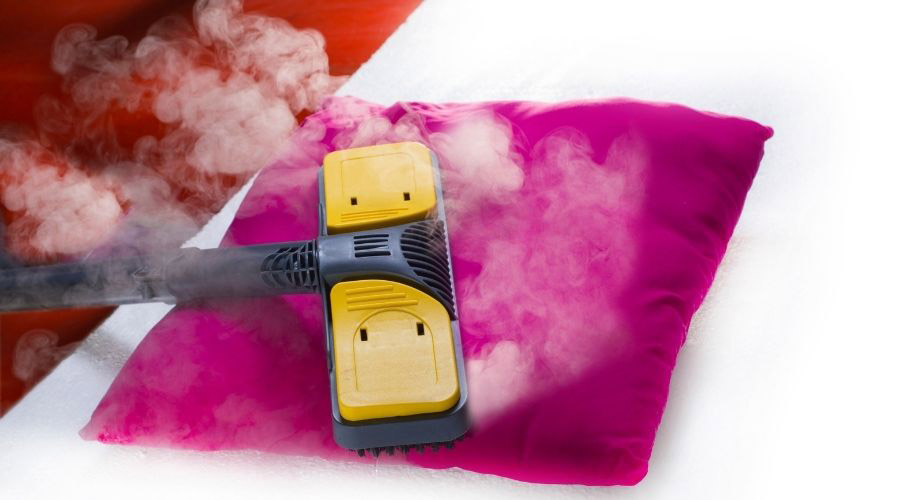
4. Get A Steam Cleaner
Fleas are susceptible to heat. Steam cleaning your carpets and upholstery can kill other fleas and purge your house of fleas in the underdeveloped stage.
Remember that steam cleaning is only part of the solution for a quick anti-flea fix. Use a steam cleaner to expose and kill fleas in the carpets. Then, use a vacuum cleaner to suck up all of the dead and paralyzed fleas that may be left behind.
Flea Science warns that while steam cleaning effectively kills fleas, it can also reduce the impact of insecticides. Wait to use solution-based anti-flea methods until you have steam cleaned and vacuumed to avoid counteraction.
4. Use Natural Home Remedies
A wide variety of home remedies will work to get rid of fleas. Down below, we have found a video that speaks of what all you can do.
Household Items
Dish soap, baking soda, salt, apple cider vinegar, lemon juice as a spray, and rosemary are all household kitchen items applied to kill fleas.
In addition to these household items, some potted plants act as natural flea repellent. These plants are as follows:
- Penny Royal
- Chrysanthemums
- Lavender
- Spearmint
Diatomaceous Earth
Diatomaceous Earth is made from the skeletons of tiny organisms called diatoms. Apply this as a light dusting indoors to control fleas without spreading chemical pesticides.
Diatomaceous Earth is sold at regular hardware suppliers such as Home Depot. For maximum effects, spread this dust lightly in crevices, furniture, carpets, and other heavy infestations. You can vacuum this up once it has had time to collect fleas.
Boric Acid
Exercise grave caution when using acid-based products. When lightly applied to infested carpets, Boric Acid will kill the fleas that ingest it. Do not use this product in an area that could be exposed to children or pets.
D-limonene, Linalool Limonene & Linal
These are citrus extracts that Beyond Pesticides recommends on their list of least toxic flea control substances. D-limonene by itself has the power to kill fleas at the larvae and adult stages. Both chemicals used together have the power to kill fleas from eggs to adult stages.
DIY Flea Traps
The last natural remedy we will delve into is a DIY flea trap. Fleas are attracted to soft, yellow lights, especially during the night.
All you will need to do is keep the light on and place a bowl of water and soap where the light is shining. Then, let the trap do its thing during your slumbering hours.
Make sure that children and pets avoid this area, though. The last thing you want to do is have an accident!
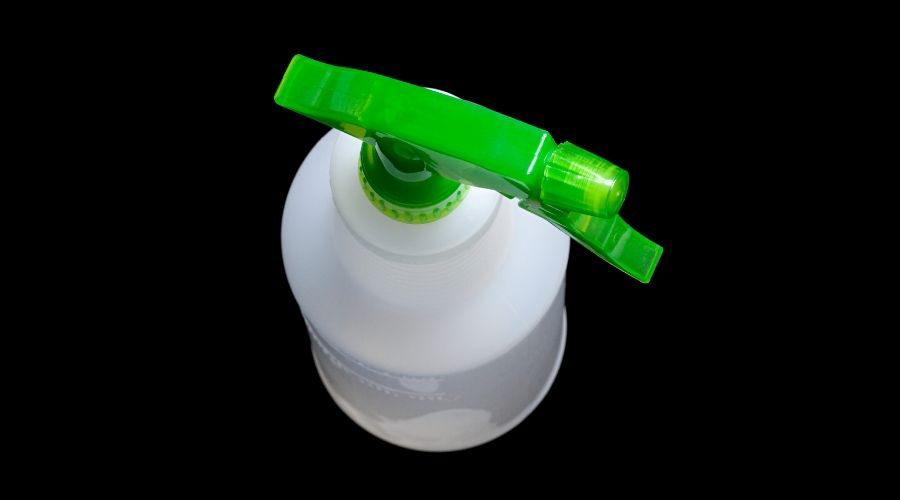
5. Be Consistent
Maintaining consistent scheduling of flea treatment and flea prevention regimens is essential. Remember that fleas develop in cycles.
Prevent the return of an infestation by being consistent with label guidelines of your flea treatment. Schedule periodic flea treatment for your pets and flea solutions for their environment.
How To Prevent Fleas From Coming Into My House?
The best flea elimination tactics come from prevention. If your home is at a higher risk of fleas, for example, if you have indoor pets, you need to exercise regular flea consciousness.
However, if you recently adopted any pets or stayed at a doggy daycare, your house is also at a higher risk.
Iowa State University lists two focus areas for adequate flea prevention. To begin with, prevent fleas from entering your home, and keep immature fleas from maturing into adults.

1. Care For Your Lawn Properly
Just like any other insects, fleas hate your lawn being so short. They will not have any hiding places, especially since your lawn will not last long. However, do not make your lawn too short, as this will not help your grass to grow.
On the flip side, you will want to ensure you are not overwatering anything. As mentioned above, fleas love hot and damp places, so they will go wherever that occurs. Unfortunately, this could mean your yard.
Make sure to clear the clutter out of your yard as well. Clear the debris, such as stone or lumber piles, out of the way. Store and stack your pots neatly, and make sure crawl spaces are clean under your deck.
Note on livestock fleas: If you live on a farm, have indoor pets, or are in an area that keeps pigs, you may need to take more frequent precautions to keep your home flea-free.
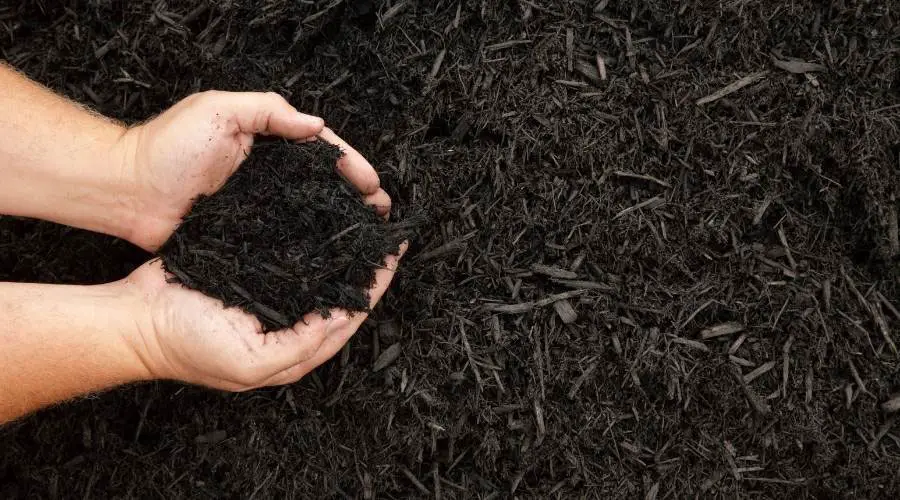
2. Prep Your Lawn For Flea Treatment
Rake organic debris such as leaves, straw, and mowing clippings to disturb the flea habitats in the ground. Spread cedar chips in areas of the lawn that pets frequent.
In addition to this, Healthline recommends asking your gardening center about nematodes. These are tiny worms that eat parasite eggs. Spreading nematodes along with sulfur granules about your lawn can help to reduce flea populations.
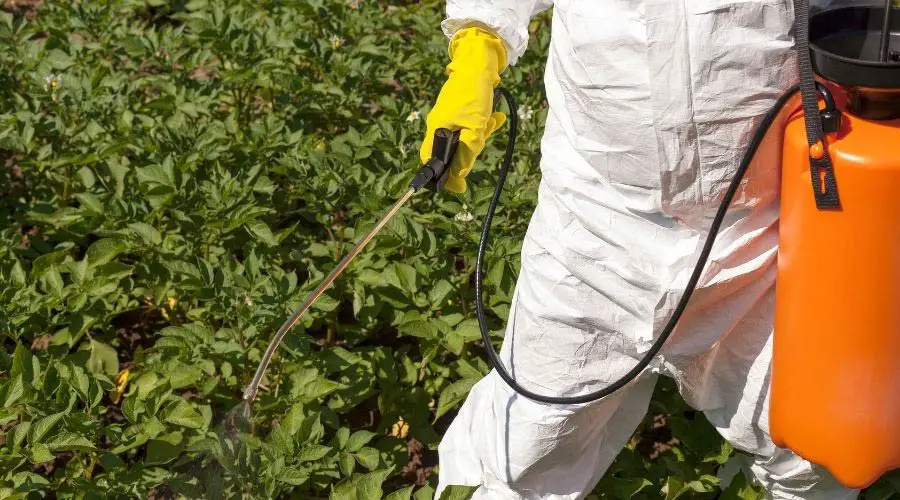
3. Lawn Pesticides
Peabody Animal Life Savers recommends environmentally safe spray containing fenvalerate for lawn pesticides.
Mow your lawn, clean it, and consider cedar mulch and certified lawn care flea spray to treat your property for pests. If you plan to use chemical flea sprays for the yard, put your pets indoors or out of reach of the spray radius. You are also advised to remove wildlife from the wake of the flea treatment.
For lawn use, insect growth regulators, abbreviated IGRs, are the recommended approach. Common IGRs include pyriproxyfen and methoprene, which target fleas at the larval stage.
Treating your yard with adulticide following IGRs ensures the fastest, long-term procedure for killing fleas on your lawn.
Caring For Your Animals
Taking care of your animals is a must to get rid of fleas. This is, after all, how fleas come into your home in the first place. Below, you will see some tips on getting rid of them on your little fur babies.
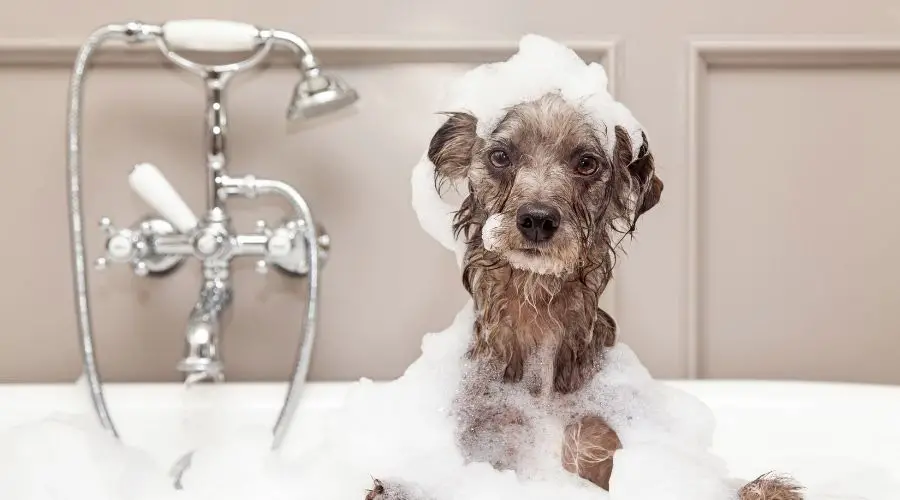
Wash Your Pets
Pet baths rid pet fur of living and dead fleas. By keeping pet hair flea-free, you keep pet beds flea-free, thus eliminating a considerable risk of flea infestation in carpets and other habitations of the premises.
You must wash all pets on-premises to avoid one pet passing fleas to another. Comb pets with a fine-toothed comb when you wash them to rid the fur of unseen fleas.
Take special precautions when treating pets for fleas. The rules for dogs and cats vary.
How To Treat A Cat For Fleas
It is important to note that some flea medicines that work on other pets, such as dogs, can be toxic to cats. Iowa State University warns that organophosphate agents or chlorinated hydrocarbons are toxic to cats. Never use these chemicals when treating cats.
Mild detergents and shampoos are recommended for cat baths. Fleas will drown in bathwater. Cats can be administered flea and tick medicines, but these must be marked for use on cats.
How To Treat A Dog For Fleas
Dogs should be given a bath to rid their fur of fleas. You can also give dogs oral flea tablets or treat their hair with flea and tick spray.
Mississippi State University has listed common dog-only effective flea treatments. Here are dog-only flea treatments:
- K9 Active
- Bravecto
- Nexgard
- Preventic collar
- Program Plus
- Sentinel spectrum
- Promeris
- Proticall
- Trifexis
- Vectra 3D
Never use flea treatments marked for dogs only on cats. It’ll be indicated on the label if a flea treatment is safe for both dogs and cats. Treatments formulated for dogs only may be toxic to cats.
How To Treat Other Pets For Fleas
You may have other pets, such as guinea pigs, indoors with a risk of flea infestation.
It is important to use treatment that is marked for use on guinea pigs. Flea treatments for other species can be extremely harmful to a guinea pig.
Sanitize a guinea pig’s habitat for fleas to ensure that eggs, larvae, or adult fleas don’t remain in the bedding.
Even pet birds can become infested with fleas. In the case of bird fleas, the bugs are usually prevalent in springtime. Flea larvae can infest bird nests.
With birds, the use of powdered flea treatment can become an issue. Pet birds have delicate respiratory systems. Be cautious of using diatomaceous earth or other dust-based flea treatment in the proximity of bird habitats.
Sanitize bird habitats to avoid fleas hopping back on board your pet bird’s back when they have been bathed and put back in their nest.
Flea Allergy Dermatitis
Your pet can contract flea-allergy dermatitis from multiple flea bites. Flea-allergy dermatitis is severe itching following flea bites. FAD affects dogs and cats allergic to flea saliva and will see them scratching incessantly.
FAD can cause additional symptoms such as dramatic hair loss, sores, scabs, and secondary bacterial infections. Topical treatments formulated for FAD are the best solution.
When To Call Pest Control
You may reach the point where you have an infestation too significant to be rid of quickly with the above items. In the case of mass infestation, it may be time to hire a professional pest control surface. These services use chemical pesticides and advanced technology to rid your home of fleas and other pests rapidly.
Conclusion
There are many ways you can treat fleas. Although it may seem like an issue now, with consistency, you will be rid of them in no time! Just follow our protocols above and ensure you and your household stay safe during the process.
Get FREE quotes from licensed pest control technicians in your area today. Whether you need spraying for ants, roaches, spiders, ticks, mosquitos, or bed bugs, We Can Help! All technicians are screened, licensed, and insured.


